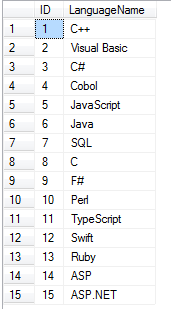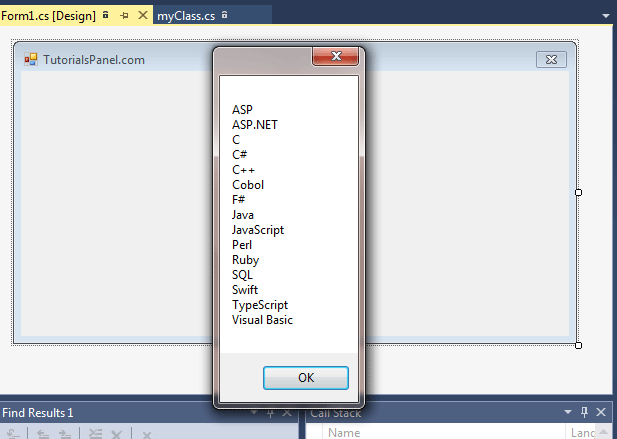Below is an example of how to populate a DataTable using a DataReader in C#.
First, let’s create the database table as showing below:
Design View

SQL
CREATE TABLE [dbo].[ProgrammingLanguage] (
[ID] INT NOT NULL,
[LanguageName] NVARCHAR (50) NULL,
PRIMARY KEY CLUSTERED ([ID] ASC)
);
Then add a few records to that table:

Now create the function that will return the return the DataTable. The function will connect the table above and execute a SQL DataReader into a DataTable:
C#
protected DataTable FromDataReaderToDataTable()
{
string connectionStr = "Data Source=TotorialsPanel-PC\SQLEXPRESS; Initial Catalog=TutorialsPanel;Integrated Security=True;";
SqlConnection cn = new SqlConnection(connectionStr);
SqlDataAdapter da = new SqlDataAdapter();
SqlCommand cmd = new System.Data.SqlClient.SqlCommand();
DataTable dtLanguages = new DataTable();
cmd.CommandText = "Select * from ProgrammingLanguage Order by LanguageName ASC";
cmd.Connection = cn;
cn.Open();
using (SqlDataReader reader = cmd.ExecuteReader())
{
dtLanguages.Load(reader);
}
return dtLanguages;
}
Make sure to add the namespace below to your solution. The System.Text namespace will be used later to create a string builder.
using System.Data.SqlClient; using System.Linq; using System.Text;
To display the data in that DataTable, create a WinForm application in C# using Visual Studio, then add the following code within the form load event of the main form:
C#
private void frm_Load(object sender, EventArgs e)
{
try
{
DataTable dt = new DataTable();
StringBuilder sb = new StringBuilder();
dt = FromDataReaderToDataTable();
foreach (DataRow dr in dt.Rows)
{
sb.AppendLine(dr[1].ToString());
}
MessageBox.Show(sb.ToString());
}
catch (Exception ex)
{ MessageBox.Show(ex.Message); }
}
Now run the application. The output should be as shown below.


Comments